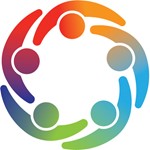May is Asian Heritage Month in Canada - a time to celebrate and reflect on how Asian people and culture contributes to our everyday lives. ‘Asian’ is a broad term that includes countries spanning across an entire continent of Asia. When we say Asian, we’re talking about East Asia (China, Japan, Korea), Southern Asia (India, Pakistan, Bangladesh), West Asia (Iran, Turkey, Lebanon) and Central Asia (Afghanistan, Kazakhstan, Uzbekistan), and Southeast Asia (Cambodia, Malaysia, and Thailand).
Those are some of the countries, but definitely not all. The experiences of those who identify as Asian are understandably vast, and Asian countries and cultures all have unique and distinct communities!
So many exercises, practices, and workouts we do every day in fitness are inspired by and have roots in Asian culture and heritage. Have you tried a yoga class? Thrown punches and kicks during BODYCOMBAT? Spent time de-stressing in a meditation session? Many of us practice these and other fitness activities often, but we may not realize the Asian influences that have shaped them.
Yoga
Yoga focuses on mind-body connection and can be traced back more than 5,000 years to northern India. Yoga was developed by sages called Rishis, who documented their practices in the Upanishads - a book containing over 200 scriptures.
More than 5,000 years ago, yoga became more common in Jain, Hindu, and Buddhist writings. By the 5th century, yoga was meant for meditation and religious use, rather than as a form of workout.
It wasn’t until the late 1800s that yoga became popular in the western world. The introduction of yoga as we know it here in North America is often attributed to Swami Vivekananda, who came to the United States from India in 1883. He described yoga as a 'science of the mind' and translated texts from their original language of Sanskrit into English. Today, the practice of yoga focuses on breathing, flexibility, and strength, and has been embraced in countries around the world.
Check out Google Arts & Culture if you’d like to learn more about the history and origin of yoga.
BODYFLOW
Les Mills BODYFLOW combines moves from yoga, Tai Chi and Pilates. While we know yoga comes from India, the origins of Tai Chi are relatively unknown. Some say it goes back to the 15th century, when it was practiced by a legendary and superhuman Taoist priest Zhang Shanfeng. Others believe Tai Chi was developed by Cheng Wangting, a member of the 16th century Chinese royal guard.
We know Tai Chi is based on the ancient Chinese philosophy called Taoism, that emphasizes natural balance in the world and the need to live in spiritual and physical alignment and harmony with nature.
Check out the GoodLife website or mobile app to learn more about BODYFLOW and register for a class at your local GoodLife club.
BODYCOMBAT
Les Mills BODYCOMBAT is inspired by Karate, boxing, Taekwondo, Tai Chi and Muay Thai. This high-energy workout is non-contact, but still includes classic martial arts moves like kicking and punching.
Martial arts incorporates different styles of self-defense, many from East Asia. For example, Karate originated as a combination of Chinese martial arts with Japanese influence, Taekwondo originated in Korea, and Muay Thai began in Thailand.
Martial arts is influenced by historical revolutions, legends, and ancient myths. Today, BODYCOMBAT combines movements from these many traditional styles of self-defense into exciting workouts designed to get your heart rate up and build strength and agility.
Meditation
Meditation dates back 3,500 years to India, Egypt and China, as well as to religions like Judaism, Hinduism, Jainism, Sikhism and Buddhism. It’s difficult to pin down the origins of meditation because there are so many different practices – from mindfulness, to chanting, to trance and contemplation.
One thing we know is that meditation has deep roots in Asian culture, and many associate it with the practice and origins of yoga.
If you’ve never tried it, meditation can seem daunting. Try a guided practice to get you started, and check if your local GoodLife offers a MindDEN studio.
Asian Heritage Month is a great opportunity to try something new, or just do a little more research into a class or practice you already know and love. Next time you’re at a GoodLife club, pop into one of these classes and try them out for yourself.
